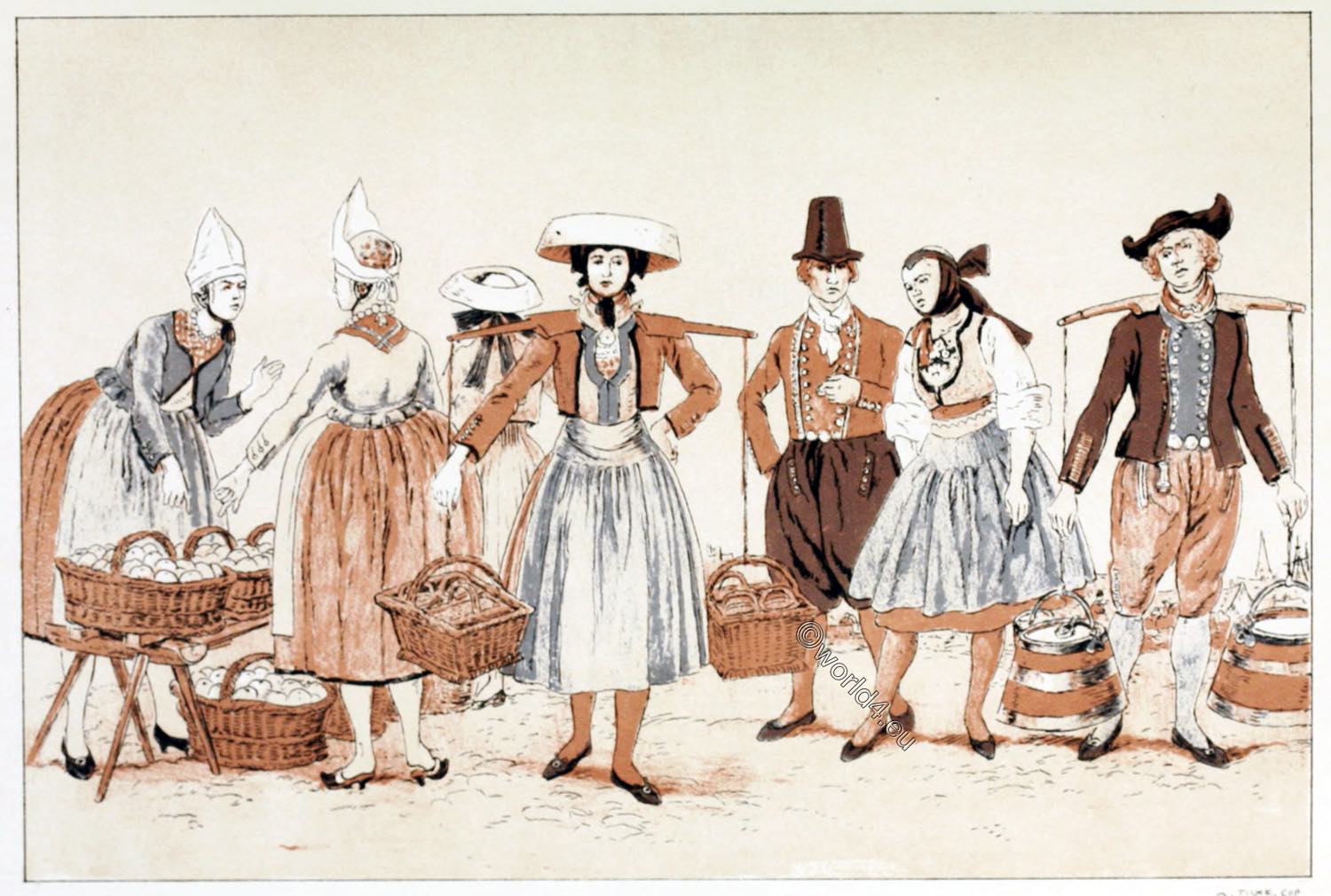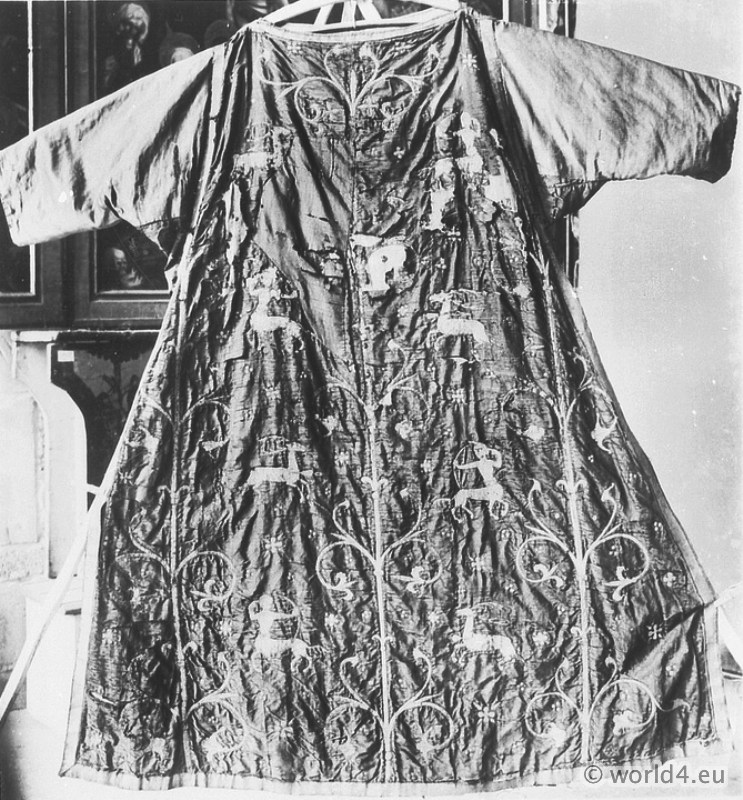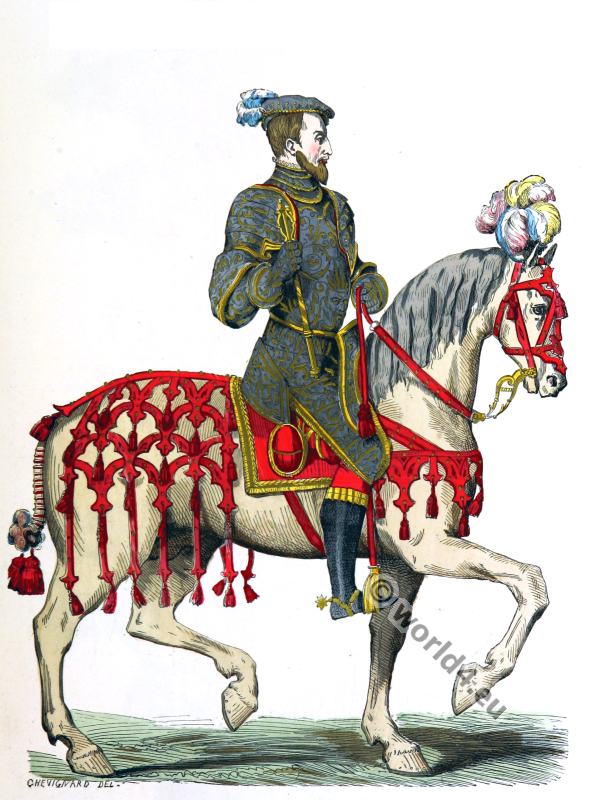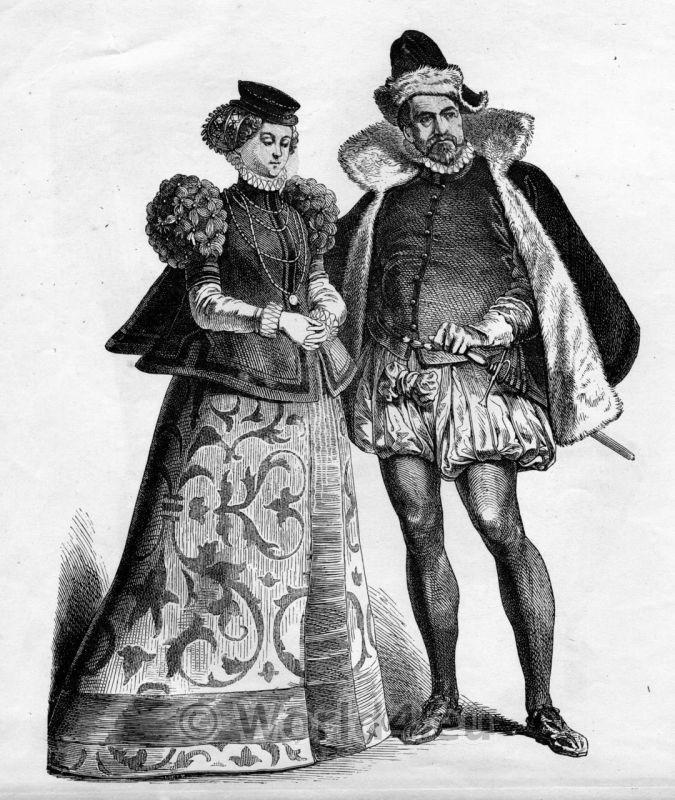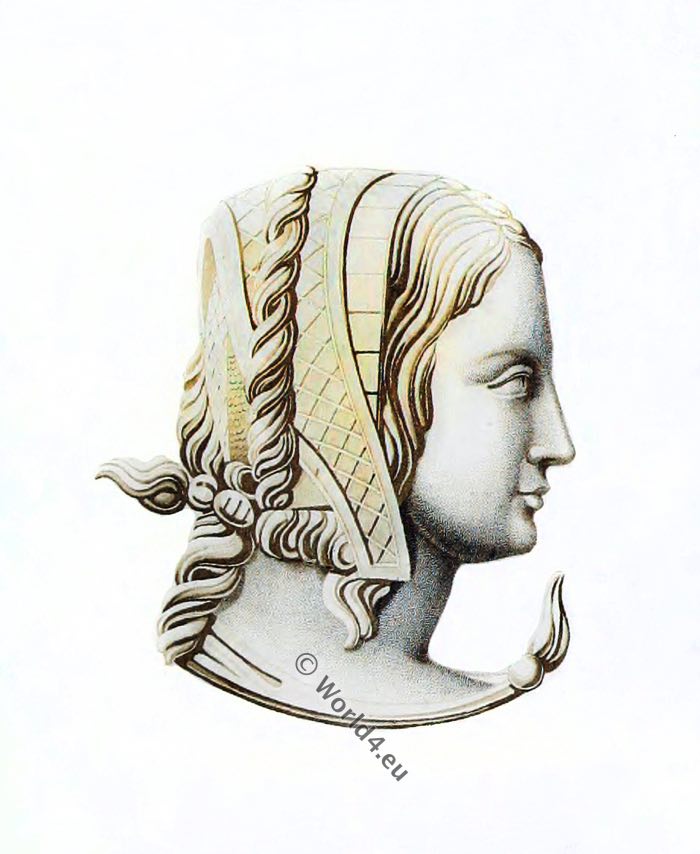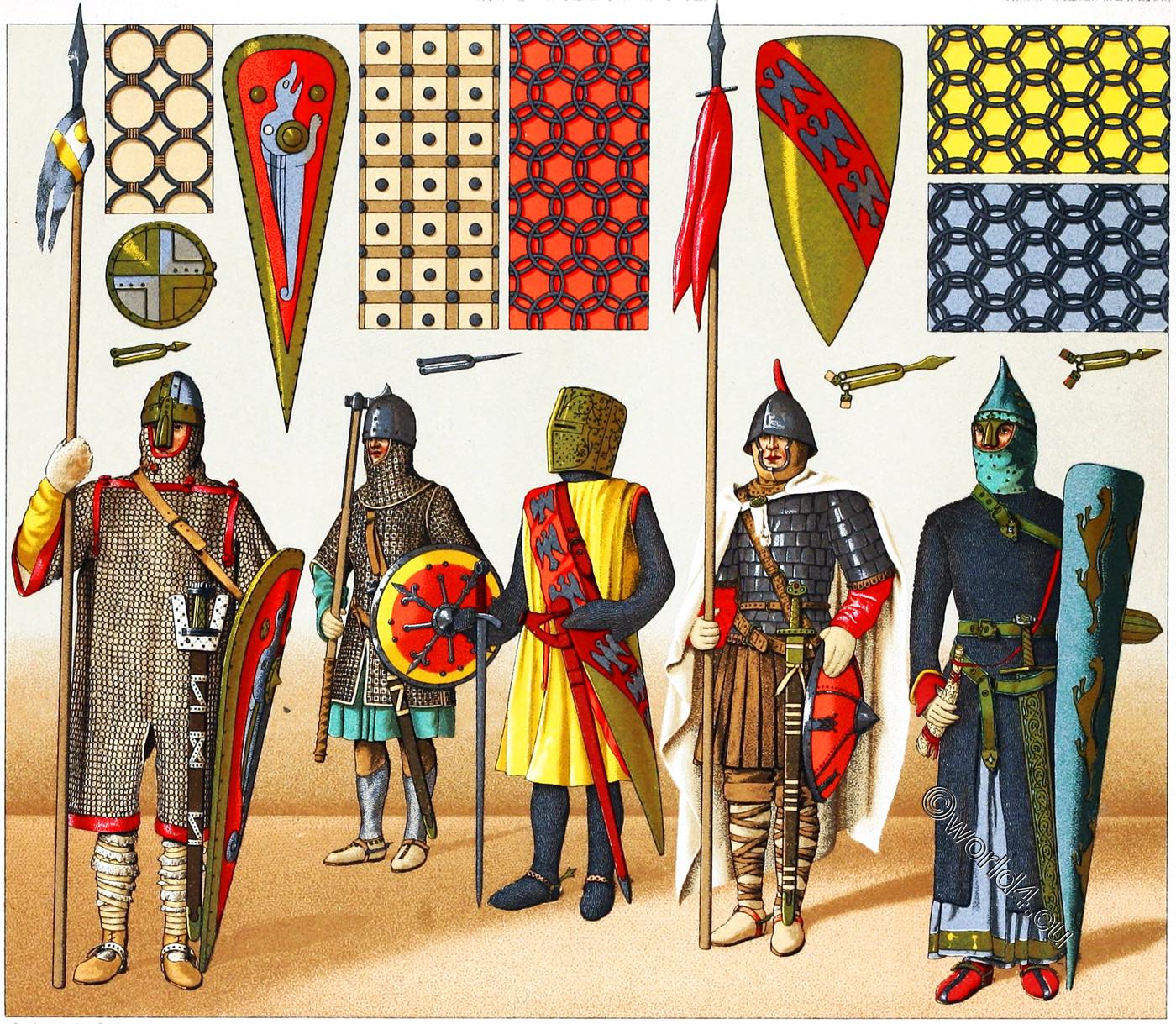
Illustrations:
1, 5, 6, 8, 10,
2, 4, 11,
3, 7, 9, 12,
13, 14, 15, 16, 17,
Armament.
FRANCE MIDDLE AGES.
WAR COSTUMES FROM THE IX TO XIII CENTURY.
Number 16.
9th century. Armament time of Charlemagne.
Surcoat with iron plates attached to a leather jacket. Skirt made of folded leather, which is related to the Scottish kilt. Iron helmet forged together from four plates with a leather helmet ornament and a leather cap underneath to which chinstraps are still attached.
The sword with bronze handle and blunt point is a edged weapon, which was preserved in this form until the 13th century. The circular shield is reinforced with a metal navel (umbo), like the ancient shields. The legs are provided with leather stockings, which are wrapped with straps. The shirt, whose red sleeves can be seen, the coat and the trousers are made of wool. The lance is decorated with a silk double tassel. The spur no. 9 is of iron. The whole costume is still reminiscent of the Roman one.
Number 14.
10th century. Armament from the time of Hugo Capet (King of the Franks from 987 to 996). Leather doublet with nails or metal plates and leather straps. No. 5 gives a clearer view of this arrangement. The headgear is a spherical helmet with lace, under which there is a hood made of armour plates like the doublet. Sword at the guard and battleaxe with long handle. Round, convex shield with navel, spur with long thorn in Arabic style. See no. 7. The leather played the role of the later metal armour at that time.
Number 13.
11th century. Time Philip I. Surcoat or broigne (ring mail) made of double or triple canvas or leather laid over each other with rings sewn on top. No. 1 shows the system more clearly.The hood forms one piece with the so-called Norman surcoat. At the bottom it takes on the shape of a leg gown. When it was put on, one had to put the legs through first and then fasten it on the shoulders.
The rings were sewn onto the canvas with strong tapes. They did not reach over each other like the tank meshes, but only touched each other. The helmet is made of iron or bronze and painted with the heraldic colours of its wearer. The bell of the helmet is shown planimetrically next to no. 2. The helmet is egg-shaped and has a fixed nose guard. The sword still has the same shapes as before: it is straight, has a cross handle and is blunt at the bottom.
The long, pointed shield at the bottom is shown under no. 4. It was hung by a strap around the neck and carried on the left shoulder. The handles inside formed a rectangle through which the hand was inserted. The shield was made of wood, covered with leather and had a metal edge and metal fittings. An animal was painted on it, which was not yet the one of the coat of arms. The gloves are mittens of leather. Only the thumb is freely worked. The footwear is made of leather, the legs are wrapped with furs. The lance is decorated with a flag with the colour of the wearer. The spur no. 3 is short.
Number 17.
Twelfth century. Government of Charles III of the Carolingian nobility.
Armament. The wooden, painted shield is very pointed and long, so that it hides almost the whole figure of the wearer, and has a very high navel. The armour mesh shirt (striped armour or chain mail), known as haubert in France (the details under nos. 6, 10 and 11), is pulled over a long skirt of blue wool fabric.
Leather gloves with fingers, leather shoes with steel strips, gold-plated spurs, a painted iron helmet with fixed nose and movable neck guard, a woolen hood and a sword belt richly decorated with metal and precious stones completed this martial equipment. The broad sword is in an artistically worked scabbard.
The horn in the right hand is made of carved ivory. The whole costume, in which Godfrey Plantagenet is depicted on a famous enamel painting from Mans, shows the influence of the Orient, especially the Saracens, caused by the Crusades.
Number 15.
Armament thirteenth century. Beginning of the reign of Louis the Saint. The body is completely covered with the chain mail. The same extends as a hood over the head, hands and feet. The chain mail consisted of the hauberk (Brünne, Brunnika, Haubert), the armour pants and the striped curtain of mail or aventail (Camail), which protected the head and was usually attached to the hauberk. In addition to the ring armour, the much older scale armour was also worn as protective equipment until the 12th century, consisting of metal or horn shingles and rhomboids, which, similar to the tiles on the roof, were sewn or riveted onto the coats and leather jackets.
On the head there is a round bulge to make it easier to wear the heavy helmet, which is called a pot helmet. The same is fastened at the back with a strap. A long surcoat made of thick silk is pulled over the armour, which protects it from sun and rain.
The long sword is suitable for thrusting and cutting. The scabbard is attached to the belt with a buckle. The epee button usually contained relics. The shield (No. 8) has no navel anymore. The belt still contains a dagger. The spur has three points. This costume is borrowed from the seal of Matthew II, Duke of Lorraine.
(From the collection of war costumes in the Artillery Museum in Paris. See Leclerc, Notice sur les costumes de guerre, Musée d’artillerie, Paris 1876)
Source: History of the costume in chronological development by Auguste Racinet. Edited by Adolf Rosenberg. Berlin 1888.

